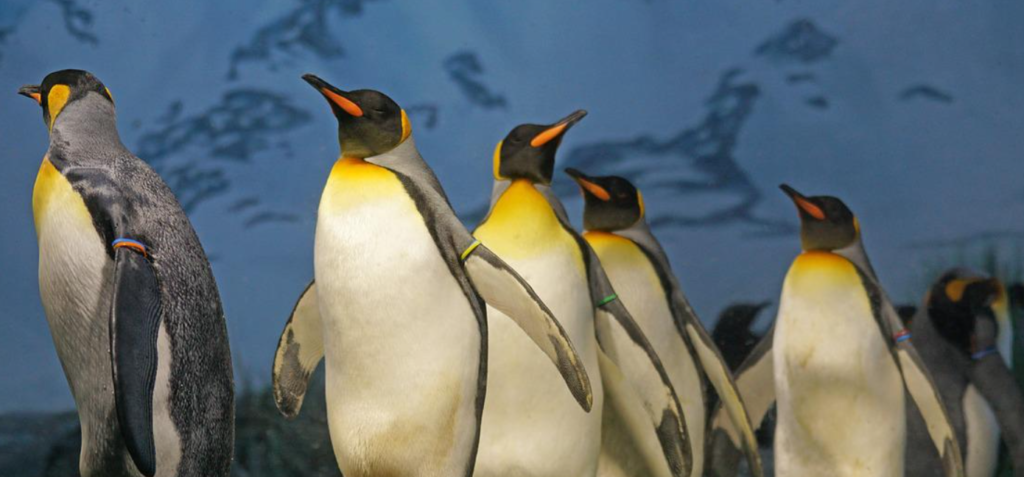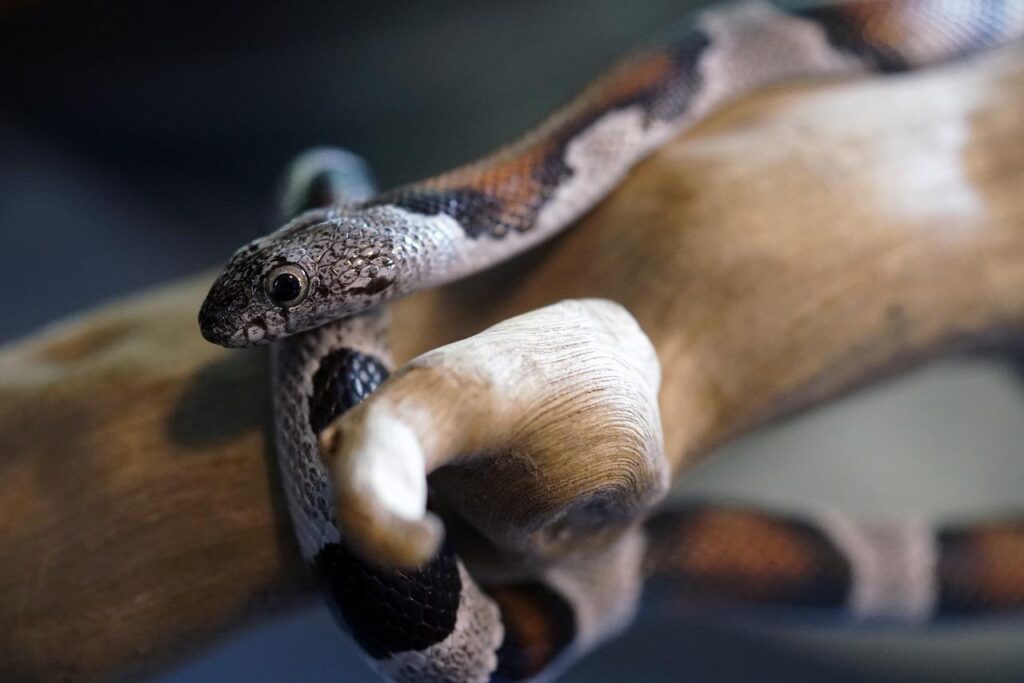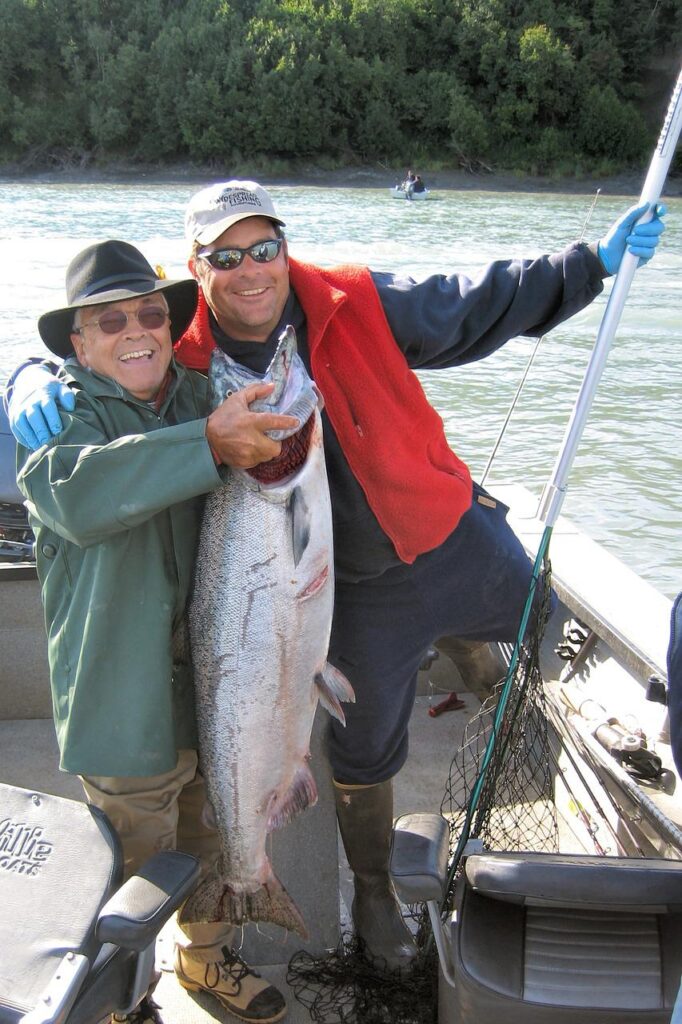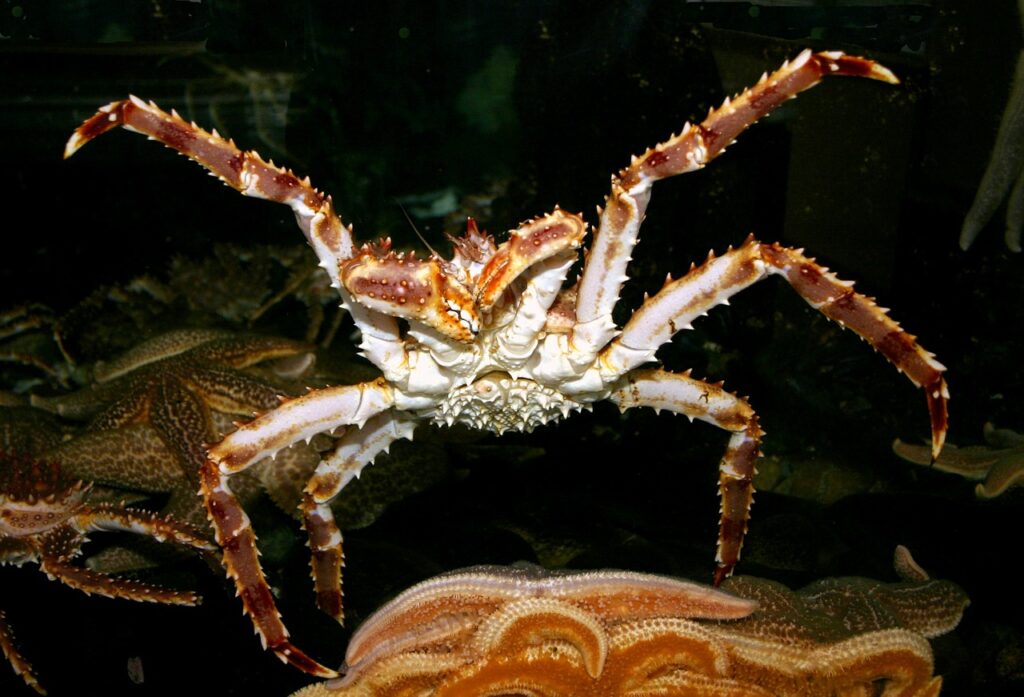What animal comes to your mind when you think of a king? A lion, most likely. It is the King of the Jungle, after all.
But as majestic as a lion is, he doesn’t have the word “king” in his name. In this article, we give you 8
fascinating animals who DO have “king” in their name. Move over, lion!
Birds
Who could have guessed that there are at least 115 birds across the globe with the word “king” in their name?
Birds for the royal win! Here are 3 of the most interesting ones.
King Eider

King Eiders are Arctic sea ducks. The fancy ones are the adult males; they have an orange bill, distinctive blue, green, and orange heads, and black-and-white bodies. The colorful males stand out in their flocks against the females, who only have black bills and brown-and-black bodies.
The King Eiders mainly look for their food under the water. They eat mollusks, crustaceans, insects, echinoderms, and plants. In the summer, insect larvae become a mainstay.
The females usually lay 4 to 5 eggs in a nest, with the eggs being a pale olive color. Once hatched, the ducklings leave the nest quickly but are supervised by groups of female King Eiders. Ducklings find their food but can’t fly until almost 2 months after hatching.
King Penguin

King Penguins are the second-largest penguin, with bright-orange ear patches. You’d notice one of them in a crowd!
These penguins don’t build a nest for their eggs. Instead, they keep them warm for about 54 days between their feet. The parents take turns at this warming task, with the male going first. Way to share the load!
King Penguins mainly live on the sub-Antarctic islands, with squid and lanternfish as their tasty treats. They like being on level ground by the sea and keeping together in big colonies.
To keep warm, they have 4 layers of feathers. The 3 inner layers are down, and the last outer layer is oiled and waterproof. Only the adults have this last outer layer, which means King Penguin chicks can’t fish until they grow up.
King Vulture

The King Vulture ranges from Mexico to Argentina and loves to eat the decaying flesh of dead animals (a.k.a. carrion). If the King Vulture is the first to arrive at a carrion site, it will eat only the eyes of the carcass and wait for other vultures to come and do the hard work of ripping open the flesh before continuing to
scavenge. But if the King Vulture lands where other vultures are already feasting, they move out of its way!
They are the largest New World vulture, apart from the condor. They can weigh 8 pounds and grow up to 2.5 feet.
King Vultures only lay 1 egg, but they share the parenting equally.
Reptiles
These 2 snakes might share part of a name, but they’re nothing alike.
King Cobra

The King Cobra is the longest venomous snake on earth. One bite from this fierce predator is powerful enough to kill an elephant! Its hiss even sounds like a growling dog.
The King Cobra has a hood, which flares out along its upper neck when it feels threatened. But it avoids human contact–it’s shy! It’s the only snake that makes a nest for its babies.
It can be found in Southeast Asia, China, India, Indonesia, and the Philippines. It lives in forests and plains, but mostly in water.
King Snake

The King Snake is non-venomous. Instead, it kills its prey by suffocation or constriction. It eats frogs, reptiles, small birds, and mammals.
The King Snake can live anywhere from lower Canada to upper South America. It likes to hide in areas with natural vegetation but can live in deserts, forests, plains, seasides, and shrublands.
When threatened, the King Snake has a few tricks. It can fake being a rattlesnake by vibrating its tail. It can make a big hiss, give off a yucky-smelling musk, or play dead.
Fish
Here are 2 fish with King in their names.
King Mackerel

King Mackerel are carnivores. They sometimes catch their prey by leaping out of the water, which is known as “skyrocketing.” They like to feed on squid, sardines, thread herring, menhaden, and mullet.
King Mackerel can be found in the Western Atlantic Ocean and the Gulf of Mexico. They can grow up to 100 pounds. Their lifespan can be as long as 20 years.
They are the only mackerels with a gray dorsal fin that sets them apart.
King Salmon

King Salmon is the largest of the wild Pacific salmon. They can be found in Western North America, Alaska, Japan, and the Arctic Sea.
For many First Nations peoples, King Salmon is the Chinook Salmon. This fish is important to them for both spiritual reasons and nutrition.
Young King Salmon eat insects, amphipods, and other crustaceans, while adults primarily eat other fish. Young salmon stay in streambeds for a short time until they’re strong enough to swim into the ocean. Some are ready before their first year, while others wait a year in freshwater before venturing to the ocean.
Arthropods
Our final animal is an arthropod! Arthropods are invertebrates with jointed legs.
King Crab

There are 120 species of King Crabs, with most living in the Southern Hemisphere, where the water is warmer. Some species, however, live in the colder waters near Alaska.
They are also different colors–brown-bluish, dark red, or golden-orange. They range from 10.5 to 24 pounds, and their carapace is around 11 inches wide. But their leg span can be as large as 6 feet!
King Crabs walk, not swim. They can walk a mile a day.
They eat clams, mussels, barnacles, worms, sand dollars, sea urchins, sea stars, snails, fish, and other crabs. Yum!
Conclusion
And there you have it–a list of 8 animals with “king” in their name. Which animal did you think was the most fascinating?
